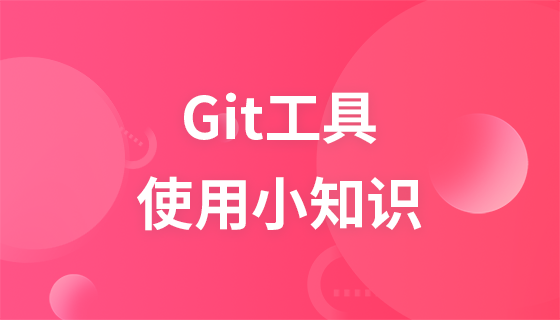
在Java并行编程中,当需要同时执行多个独立任务时,确保其中一个或多个任务的失败不会导致整个批处理过程中止至关重要。本文将探讨如何在利用CompletableFuture进行并行方法调用的同时,优雅地捕获并收集异常,从而实现即使部分任务失败也能保证所有任务尝试执行完毕,并在事后统一处理或报告所有错误。
在传统的迭代式处理中,如果一个任务抛出异常,通常可以通过try-catch块来捕获并继续下一个任务的执行。然而,当我们将处理方式转换为并行模式时,例如使用Java Stream API的parallel()或CompletableFuture,异常处理的策略需要重新考量。
一个常见的误区是,在并行流的forEach操作中,如果某个任务内部捕获到异常并尝试通过共享的CompletableFuture来完成异常状态(例如thrownException.complete(e)),这可能会导致流的提前终止。因为一旦CompletableFuture被标记为异常完成,后续对该CompletableFuture的等待或组合操作可能会立即抛出异常,从而中断整个并行批处理,阻止其他尚未完成的任务继续执行。
我们的目标是,即使在并行执行的某个disablePackXYZ调用中发生异常,也不应中断其他disablePackXYZ调用的执行,而是让所有任务尽可能地完成,并在最后汇总所有成功和失败的结果(包括捕获到的异常)。
立即学习“Java免费学习笔记(深入)”;
为了实现“失败不中断整体流程”的目标,核心思想是在每个并行任务内部独立捕获并处理异常,而不是将其传播出去导致外部流程中断。具体来说,我们不让CompletableFuture本身因内部异常而以“异常”状态完成,而是让它以“正常”状态完成,但同时将内部捕获的异常存储到一个共享的、线程安全的集合中。
以下是将原有的迭代式disableXYZ方法改造为并行且容错的实现:
import java.util.ArrayList;
import java.util.List;
import java.util.concurrent.CompletableFuture;
import java.util.concurrent.ConcurrentLinkedQueue;
import java.util.stream.Collectors;
// 模拟日志工具
class Logger {
public void error(String format, Object... args) {
System.err.printf(format + "%n", args);
}
public void info(String format, Object... args) {
System.out.printf(format + "%n", args);
}
}
// 模拟UnSubscribeRequest类
class UnSubscribeRequest {
private String requestedBy;
private String cancellationReason;
private Long id;
public static UnSubscribeRequest unsubscriptionRequest() {
return new UnSubscribeRequest();
}
public UnSubscribeRequest requestedBy(String requestedBy) {
this.requestedBy = requestedBy;
return this;
}
public UnSubscribeRequest cancellationReason(String cancellationReason) {
this.cancellationReason = cancellationReason;
return this;
}
public UnSubscribeRequest id(Long id) {
this.id = id;
return this;
}
@Override
public String toString() {
return "UnSubscribeRequest [id=" + id + ", requestedBy=" + requestedBy + "]";
}
}
public class ParallelSafeExecutor {
private static final Logger log = new Logger();
// 模拟待并行执行的方法,可能抛出异常
private void disablePackXYZ(UnSubscribeRequest request) throws Exception {
// 模拟业务逻辑,例如:ID为奇数时模拟失败
if (request.id % 2 != 0) {
throw new RuntimeException("Simulated failure for ID: " + request.id);
}
log.info("Successfully disabled pack for ID: " + request.id);
}
/**
* 并行执行多个 disablePackXYZ 调用,并收集所有异常,不中断整体流程。
*
* @param rId 相关ID
* @param disableIds 待禁用ID列表
* @param requestedBy 请求者
*/
public void disableXYZParallelSafe(Long rId, List<Long> disableIds, String requestedBy) {
// 使用线程安全的集合来存储捕获到的异常
ConcurrentLinkedQueue<Exception> caughtExceptions = new ConcurrentLinkedQueue<>();
// 创建一系列CompletableFuture任务
List<CompletableFuture<Void>> futures = disableIds.stream()
.map(disableId -> CompletableFuture.runAsync(() -> {
try {
// 执行核心业务逻辑
disablePackXYZ(UnSubscribeRequest.unsubscriptionRequest()
.requestedBy(requestedBy)
.cancellationReason("system")
.id(disableId)
.build());
} catch (Exception e) {
// 捕获异常,并将其添加到线程安全的异常集合中
log.error("Failed to disable pack (async). id: {}, rId: {}. Error: {}", disableId, rId, e.getMessage());
caughtExceptions.add(e); // 关键:收集异常,而不是重新抛出
}
}))
.collect(Collectors.toList());
// 等待所有CompletableFuture任务完成
// CompletableFuture.allOf() 会创建一个新的 CompletableFuture,
// 当所有给定的 CompletableFuture 都完成时,它也会完成。
// 如果内部的 CompletableFuture 已经捕获并处理了异常,
// 那么它们将以正常状态完成,allOf().join() 不会抛出异常。
CompletableFuture<Void> allOfTasks = CompletableFuture.allOf(futures.toArray(new CompletableFuture[0]));
try {
allOfTasks.join(); // 阻塞直到所有任务完成
log.info("All parallel tasks have completed their execution attempts.");
} catch (Exception e) {
// 这个catch块只会在 CompletableFuture.allOf() 本身因某种原因(如任务被取消或未捕获的运行时错误)
// 导致异常完成时触发,而不是由 disablePackXYZ 内部捕获的异常触发。
log.error("An unexpected error occurred while waiting for all tasks to complete: {}", e.getMessage());
}
// 检查并处理所有收集到的异常
if (!caughtExceptions.isEmpty()) {
log.error("Parallel processing finished with {} failures. Details:", caughtExceptions.size());
caughtExceptions.forEach(e -> log.error(" - {}", e.getMessage()));
// 根据业务需求,可以在这里抛出一个包含所有子异常的复合异常
// 例如:throw new BatchProcessingException("Some tasks failed", new ArrayList<>(caughtExceptions));
} else {
log.info("All parallel tasks completed successfully without any reported failures.");
}
}
public static void main(String[] args) {
ParallelSafeExecutor executor = new ParallelSafeExecutor();
List<Long> idsToDisable = List.of(1L, 2L, 3L, 4L, 5L, 6L, 7L); // 包含奇数和偶数ID
Long requestId = 1001L;
String requestedBy = "systemAdmin";
log.info("--- Starting parallel safe execution ---");
executor.disableXYZParallelSafe(requestId, idsToDisable, requestedBy);
log.info("--- Parallel safe execution finished ---");
}
}线程安全集合的选择: 根据实际需求选择合适的线程安全集合。ConcurrentLinkedQueue适用于简单的添加操作,CopyOnWriteArrayList适用于读多写少且需要迭代的场景,而Collections.synchronizedList()或Collections.synchronizedSet()则提供了同步包装器。
自定义线程池: CompletableFuture.runAsync()和supplyAsync()默认使用ForkJoinPool.commonPool()。对于I/O密集型任务或需要特定线程管理策略的场景,建议使用自定义的ExecutorService来避免阻塞公共线程池或资源耗尽。
// 例如,使用固定大小的线程池
ExecutorService customExecutor = Executors.newFixedThreadPool(10);
// ...
CompletableFuture.runAsync(() -> { /* task */ }, customExecutor);
// ...
// 记得在应用关闭时关闭线程池
// customExecutor.shutdown();结果与异常的关联: 在上述示例中,我们只收集了异常。如果每个并行任务除了可能抛出异常外,还有返回值,并且需要将返回值与对应的任务ID或异常关联起来,可以考虑使用CompletableFuture.supplyAsync()并返回一个包含结果或异常的自定义包装类,或者使用CompletableFuture.handle()来处理结果和异常。
// 示例:返回结果或异常
class TaskResult {
Long id;
Object result; // 实际业务结果
Exception error; // 如果有错误
public static TaskResult success(Long id, Object result) { /* ... */ }
public static TaskResult failure(Long id, Exception error) { /* ... */ }
}
// ...
List<CompletableFuture<TaskResult>> futures = disableIds.stream()
.map(disableId -> CompletableFuture.supplyAsync(() -> {
try {
// ... disablePackXYZ logic ...
return TaskResult.success(disableId, "Success message");
} catch (Exception e) {
return TaskResult.failure(disableId, e);
}
}))
.collect(Collectors.toList());
CompletableFuture.allOf(futures.toArray(new CompletableFuture[0])).join();
List<TaskResult> allResults = futures.stream()
.map(CompletableFuture::join) // 获取每个任务的TaskResult
.collect(Collectors.toList());
// 遍历allResults,区分成功和失败日志记录: 及时、详细地记录每个并行任务的成功与失败状态,对于调试和问题排查至关重要。
复合异常: 如果需要在所有并行任务完成后,将所有捕获到的异常作为一个整体向上层抛出,可以创建一个自定义的复合异常类,并在其中包含所有子异常。
通过在每个并行任务内部进行异常捕获和收集,并利用CompletableFuture.allOf()等待所有任务完成,我们能够构建出健壮且容错的并行处理流程。这种模式确保了即使在分布式或高并发环境中,单个组件的故障也不会导致整个批处理过程的中断,从而提高了系统的可用性和稳定性。这种“失败不中断,事后统一处理”的策略在处理大量独立且可能失败的任务时尤为有效。
以上就是Java并行方法调用中的异常处理:确保单个故障不中断整体流程的详细内容,更多请关注php中文网其它相关文章!

每个人都需要一台速度更快、更稳定的 PC。随着时间的推移,垃圾文件、旧注册表数据和不必要的后台进程会占用资源并降低性能。幸运的是,许多工具可以让 Windows 保持平稳运行。




Copyright 2014-2025 https://www.php.cn/ All Rights Reserved | php.cn | 湘ICP备2023035733号